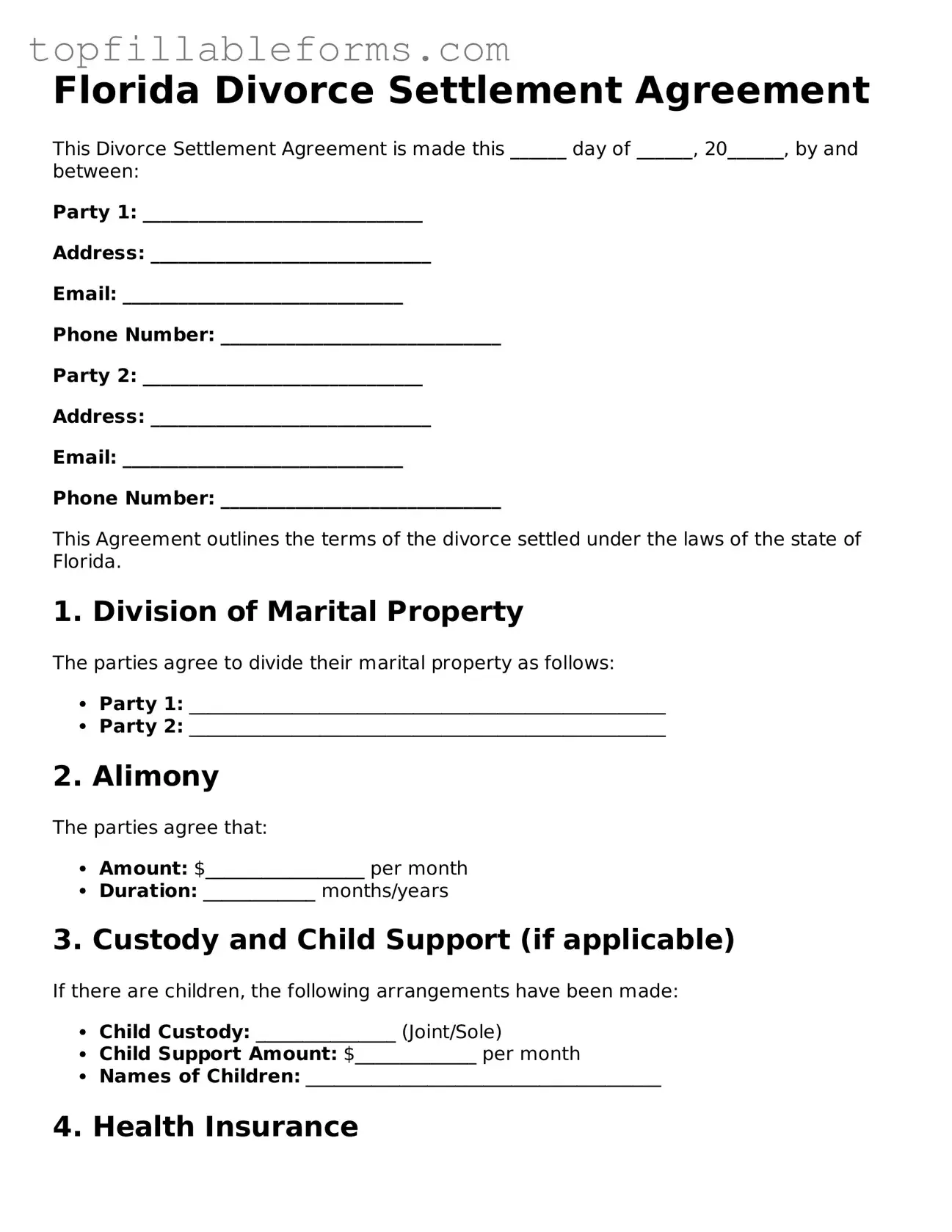Florida Divorce Settlement Agreement
This Divorce Settlement Agreement is made this ______ day of ______, 20______, by and between:
Party 1: ______________________________
Address: ______________________________
Email: ______________________________
Phone Number: ______________________________
Party 2: ______________________________
Address: ______________________________
Email: ______________________________
Phone Number: ______________________________
This Agreement outlines the terms of the divorce settled under the laws of the state of Florida.
1. Division of Marital Property
The parties agree to divide their marital property as follows:
- Party 1: ___________________________________________________
- Party 2: ___________________________________________________
2. Alimony
The parties agree that:
- Amount: $_________________ per month
- Duration: ____________ months/years
3. Custody and Child Support (if applicable)
If there are children, the following arrangements have been made:
- Child Custody: _______________ (Joint/Sole)
- Child Support Amount: $_____________ per month
- Names of Children: ______________________________________
4. Health Insurance
The parties agree to maintain health insurance for the children as follows:
- Party responsible for insurance: _________________________
- Policy details: __________________________________________
5. Debts
The parties agree to be responsible for their respective debts:
- Party 1 Debts: ___________________________________________
- Party 2 Debts: ___________________________________________
6. Additional Agreements
Any other terms agreed upon by both parties:
- ______________________________________________________________
- ______________________________________________________________
7. Governing Law
This Agreement will be governed by the laws of the state of Florida.
Signatures:
____________________________________
Party 1 Signature
____________________________________
Party 2 Signature
Date: ___________________________
